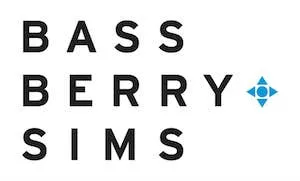- within Coronavirus (COVID-19) topic(s)
In June 2025, Terren Scott Peizer, the former chief executive officer, executive chairman and chairman of the board of directors of Ontrak, Inc. (Ontrak), was sentenced to 42 months imprisonment, ordered to pay a $5.25 million fine, and required to forfeit more than $12.7 million in ill-gotten gains with respect to trades made in connection with a pre-determined trading plan intended to establish an affirmative defense to insider trading charges (a Rule 10b5-1 Plan). According to the Department of Justice (DOJ), Peizer is the first executive to be convicted in a criminal case based on the use of a Rule 10b5-1 Plan.
Rule 10b5-1 Plans
Under Rule 10b5-1 (Rule 10b5-1) of the Securities Exchange Act of 1934, as amended (Exchange Act), a person is deemed to have traded "on the basis" of material nonpublic information (MNPI) if they are aware of such information when making a trade in the securities of the impacted public company, subject to certain affirmative defenses. One of these defenses is the entry into a Rule 10b5-1 Plan prior to becoming aware of such information, subject to further conditions.
In general, Rule 10b5-1 Plans provide details in which corporate insiders will trade in a public company's stock at pre-determined dates in the future. Rule 10b5-1 Plans are most commonly entered into between a corporate insider and a broker and often include details such as: (1) the number of shares to be sold or purchased; (2) the period during which the corporate insider's shares will be traded; and (3) the prices at which the corporate insider's shares will be traded. To date, Rule 10b5-1 Plans have been used widely by corporate insiders as an additional layer of protection against potential insider trading liability.
Among other things, in order to take advantage of the affirmative defense offered under Rule 10b5-1, any Rule 10b5-1 Plan must be entered into in "good faith and not as part of a plan or scheme to evade the prohibitions of Rule 10b5‐1" and must be adopted at a time "when the person trading was not aware of any [MNPI]." In December 2022, the Securities and Exchange Commission (SEC) amended Rule 10b5-1 to include a "cooling-off" period between the adoption or modification of a Rule 10b5-1 Plan and the first trade made under the Rule 10b5-1 Plan. Cooling-off periods are intended to ensure that enough time has passed between the establishment of a Rule 10b5-1 Plan and the execution of the first trade under the Rule 10b5-1 Plan to minimize the likelihood that the corporate insider entered into the Rule 10b5-1 Plan with the intention of trading on the basis of MNPI. This amendment applied a 90-day cooling-off period for directors and officers and a 30-day cooling-off period for individuals other than issuers, directors and officers. When used correctly, Rule 10b5-1 Plans allow corporate insiders, who frequently possess MNPI in connection with normal job responsibilities, to trade in their company's securities with reduced risk of insider trading liability.
United States v. Peizer
As the founder of Ontrak, Peizer served as chief executive officer of Ontrak from September 2003 until March of 2021, when Peizer stepped down as chief executive officer and became the executive chairman and chairman of Ontrak's board of directors. Due to the nature of his roles, Peizer routinely had access to MNPI related to Ontrak. The DOJ alleges that, in March 2021, Peizer learned that Ontrak's largest customer, a large health services company (the Customer), was considering terminating its agreement with Ontrak, knowledge that only people within Ontrak possessed. In April 2021, Peizer is alleged to have had several text message conversations with the Ontrak employee who was responsible for ensuring that the Customer's business was retained (the Negotiating Employee). At that point, according to the Negotiating Employee, the probability of Ontrak retaining the Customer's business appeared to be low.
In advance of a scheduled meeting between Ontrak and the Customer in May 2021 (the May Meeting), Peizer is alleged to have entered into a Rule 10b5-1 Plan to sell approximately $19 million of Ontrak's common stock (the May Rule 10b5-1 Plan). Notably, according to reports previously filed with the SEC, Peizer sold Ontrak's common stock on only two previous occasions: one sale in 2008 for approximately $200,000 and another sale in 2011 for approximately $118,000.
Prior to entering into the May Rule 10b5-1 Plan, Peizer contacted two different brokers to determine the best option for establishing a Rule 10b5-1 Plan. The DOJ alleges that the primary difference between the brokers was that: (1) the first broker informed Peizer that the May Rule 10b5-1 Plan would be subject to a cooling-off period and (2) the second broker (Broker B) informed Peizer that it would be industry best practice to follow a 30-day cooling-off period, but did not require Peizer to abide by the cooling-off period. Peizer allegedly insisted that the May Rule 10b5-1 Plan not have a cooling-off period and worked with Broker B to establish the May Rule 10b5-1 Plan despite Broker B's advice regarding the cooling-off period. In addition, the DOJ alleges that Peizer provided false certifications to Broker B and Ontrak's chief financial officer regarding his possession of MNPI at the time of adoption of the May Rule 10b5-1 Plan.
At the May Meeting, the Customer informed Ontrak of its decision to terminate the agreement with Ontrak by the end of 2021. This information was not publicly disclosed until August 18, 2021. Peizer is alleged to have sold shares under the May Rule 10b5-1 Plan from its establishment until July 2021, resulting in approximately $18.9 million in proceeds.
In August 2021, Peizer again discussed the Customer with the Negotiating Employee and was informed that the Customer was likely to terminate its relationship with Ontrak. Within an hour after this discussion, Peizer entered into a second Rule 10b5-1 Plan (the August Rule 10b5-1 Plan) and, prior to the announcement of Customer's termination of its agreement with Ontrak, Peizer sold approximately $900,000 of Ontrak's common stock under the August Rule 10b5-1 Plan. After the public announcement of the Customer's decision to terminate the relationship, Ontrak's common stock price fell by approximately 44%. Between the May Rule 10b5-1 Plan and the August Rule 10b5-1 Plan, Peizer is alleged to have avoided approximately $12.5 million in losses by trading while in possession of MNPI. In June 2024, following a 10-day trial in federal court in Los Angeles, California, a jury found Peizer guilty on all counts included in the indictment.
Takeaways
This ruling provides insight into how both corporate insiders and public companies should conduct themselves when a Rule 10b5-1 Plan is in place. A valid Rule 10b5-1 Plan requires that corporate insiders act in the following manner:
- Implement a cooling-off period prior to trading under a Rule 10b5-1 Plan.
- Enter into a Rule 10b5-1 Plan in good faith.
- Enter into a Rule 10b5-1 Plan while not in possession of MNPI.
In light of the outcome in Peizer, public companies should:
- Consider evaluating any existing pre-clearance procedures (including the certifications provided by corporate insiders) to ensure compliance with applicable law.
- Review insider trading policies to consider whether any changes are necessary.
- Ensure that corporate insiders are provided training regarding the most significant elements of a valid Rule 10b5-1 Plan.
The content of this article is intended to provide a general guide to the subject matter. Specialist advice should be sought about your specific circumstances.



